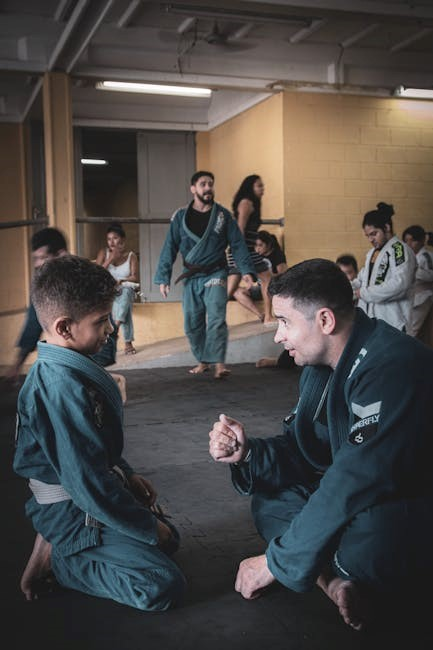A comprehensive guide to preparing for a half Ironman, this training plan focuses on building endurance, strength, and race-specific skills while minimizing injury risks and optimizing recovery strategies.
What is a Half Ironman?
A Half Ironman, also known as an IRONMAN 70.3, is a long-distance triathlon consisting of a 1.9-kilometer swim, a 90-kilometer bike ride, and a 21.1-kilometer run. It is a challenging event that tests endurance, strength, and mental resilience. The race demands a balanced approach to training, incorporating swim, bike, and run disciplines. Participants must prepare thoroughly to handle the physical and mental demands, making it a significant achievement for triathletes seeking to push their limits and showcase their dedication to the sport.
Importance of a Structured Training Plan
A structured training plan is essential for Half Ironman preparation, ensuring a balanced approach to building endurance, strength, and race-specific skills. It helps avoid injuries by gradually increasing intensity and volume, while also promoting consistency and mental resilience. A well-designed plan tailors workouts to individual needs, optimizing progress and race readiness. Without a structured plan, athletes risk overtraining, burnout, or underperformance, making it a cornerstone of successful Half Ironman preparation and a key factor in achieving personal bests.

Understanding the Half Ironman Race
A Half Ironman is a triathlon consisting of a 1.9 km swim, 90 km bike ride, and 21.1 km run. It demands endurance, mental stamina, and precise preparation.
Distance Breakdown: Swim, Bike, and Run
A Half Ironman consists of a 1.9 km swim, 90 km bike ride, and 21.1 km run. Each segment demands specific endurance and technique. The swim requires focused breathing and stroke efficiency, while the bike emphasizes cadence and gear management. The run tests stamina and pacing. Together, these distances create a challenging yet achievable triathlon experience for athletes with proper training and preparation.
Unique Challenges of the Half Ironman
The Half Ironman presents unique challenges, including sustained endurance across three disciplines, mental resilience, and managing transitions. Athletes must balance swim, bike, and run efforts while maintaining hydration and nutrition. The race’s duration tests physical and mental limits, requiring strategic pacing and gear management. Additionally, the cumulative fatigue from each segment demands careful preparation and adaptability. These challenges make the Half Ironman a true test of overall fitness, discipline, and race-day execution.

Creating a Personalized Training Plan
A personalized plan tailors training to individual needs, goals, and schedules, ensuring realistic progression while balancing endurance, strength, and recovery to avoid injury and optimize performance.
Assessing Current Fitness Level
Evaluating your current fitness level is crucial for creating an effective training plan. Start by assessing your swim, bike, and run abilities through timed trials or heart-rate tests. Measure your endurance, speed, and overall consistency in each discipline. Identify strengths and weaknesses to tailor workouts accordingly. Consider past injuries and set realistic benchmarks. This baseline assessment ensures the plan is challenging yet achievable, helping you progress safely and avoid overtraining. Regular reassessments track improvements, keeping the plan aligned with your evolving fitness level and race goals.
Setting Realistic Goals and Timeframes
Setting realistic goals and timeframes is essential for a successful half Ironman training plan. Define clear, achievable objectives based on your fitness level and experience. Break down larger goals into smaller, manageable milestones to maintain motivation. Allocate sufficient time for each training phase, ensuring gradual progression. A typical plan spans 16-24 weeks, allowing for base building, intensity increases, and tapering. Adjust timelines to accommodate personal commitments and recovery needs; Having structured, time-bound goals helps maintain focus and ensures steady progress toward race day readiness. Consistency and patience are key to long-term success.
Key Components of a Half Ironman Training Plan
A well-structured half Ironman training plan includes balanced swim, bike, and run workouts, along with strength training and recovery strategies. It emphasizes progressive overload to build endurance and race-specific speed. The plan should incorporate periodized phases, such as base building, intensity, and taper. Nutrition and hydration are also critical components, ensuring proper fueling for workouts and races. Additionally, mental preparation and gear management are addressed to optimize race day performance. A good plan adapts to individual fitness levels and goals, ensuring sustainability and peak readiness for the event.
Base Training Phase
The base phase focuses on building foundational endurance and consistency in swimming, cycling, and running, ensuring a solid platform for more intense training in later stages.
Building Endurance in Swimming
Consistent swimming practice is crucial for building endurance. Focus on drills that improve stroke efficiency and endurance, such as long sets and interval training. Incorporate rest days to avoid overtraining. Gradually increase swim distances to build stamina and confidence. Strength exercises targeting the upper body can enhance power in the water. Practice open-water swimming to adapt to race conditions. A well-structured swim plan ensures progressive overload, helping you maintain a steady pace during the race;
Increasing Cycling Stamina
Building cycling stamina requires consistent training and gradual progression. Focus on long rides to improve endurance, incorporating interval sessions for sustained power. Cadence drills can enhance efficiency and speed. Strength training on the bike, such as hill repeats, helps build muscular endurance. Simulate race conditions during training to adapt to the demands of the event. Avoid overtraining by balancing intense sessions with recovery rides. Proper gear management and pacing strategies are key to maintaining energy levels throughout the race. A structured approach ensures steady progress and peak performance on race day.
Developing Running Consistency
Consistency is key to building a strong running foundation for a half Ironman. Aim for regular runs, including long runs to boost endurance and interval sessions to improve speed. Incorporate strength training to enhance running efficiency and prevent injuries. Gradually increase weekly mileage to avoid burnout, ensuring adequate recovery between sessions. Focus on maintaining a steady pace during workouts to simulate race conditions. Proper hydration and nutrition during runs are essential for optimal performance. Consistent training helps build mental resilience, ensuring you’re prepared for the demands of race day.

Build Training Phase
This phase transitions from endurance to intensity, introducing strength training, speed intervals, and race simulations to enhance performance and prepare athletes for the demands of the half Ironman.
Introducing Strength Training
Strength training is crucial during the build phase to enhance muscular endurance, power, and overall performance. Focus on exercises like squats, lunges, and core workouts to build lower body strength. Incorporate upper body exercises to improve swimming and cycling efficiency. Aim for 2-3 strength sessions per week, ensuring proper form to prevent injuries. Progressively increase intensity to adapt to race demands. This phase also emphasizes functional movements that mimic race-specific actions, helping athletes build resilience and maintain consistency during high-intensity training blocks. Strength training complements endurance work, ensuring a well-rounded approach to race preparation.
Incorporating Speed and Intervals
Incorporating speed and interval workouts into your training boosts cardiovascular fitness and muscular endurance. These high-intensity sessions involve short bursts of effort followed by recovery periods. For swimming, focus on short sprints to improve stroke efficiency. Cycling intervals, like high-cadence drills, enhance leg speed and endurance. Running intervals, such as 400-meter repeats, increase lactate threshold. These workouts are tailored to race-specific demands, helping you build the speed and stamina needed for a strong finish. Consistency in these sessions ensures you can maintain pace during the race while pushing your limits safely.
Simulating Race Conditions
Simulating race conditions in training is crucial for mental and physical preparation. Incorporate open-water swims, long bike rides on varied terrain, and runs in race-like temperatures. Practice transitions to master the switch between disciplines. Include brick workouts, where you transition from bike to run, to build race-specific stamina. Mimic race-day nutrition and hydration strategies to avoid digestive issues. Test gear and equipment under race-like conditions to ensure comfort and functionality. These simulations enhance race readiness, reduce anxiety, and build confidence, helping you perform at your best on race day.

Taper and Rest Phase
The taper phase involves gradually reducing training volume two weeks before the race, allowing your body to recover and peak performance capabilities, ensuring optimal race readiness.
Reducing Training Volume Safely
Safely reducing training volume during the taper phase is crucial to avoid injury and maintain performance. Gradually decrease intensity and frequency over two weeks, allowing the body to adapt and recover. Focus on active recovery techniques like light swimming or cycling to keep muscles engaged without overexertion. Properly managing the reduction ensures peak physical condition on race day, balancing rest with minimal maintenance workouts to preserve endurance and speed. This strategic approach prevents burnout and enhances mental readiness for the challenge ahead.
Allowing the Body to Recover
Recovery is a critical phase in any successful training plan. Allowing the body to heal ensures optimal performance and prevents overtraining. Incorporate techniques such as foam rolling, stretching, and adequate sleep to aid muscle repair. Proper nutrition, including protein-rich foods and hydration, supports tissue regeneration. Rest days and low-intensity activities, like light swimming or cycling, help maintain fitness without strain. Balancing recovery with reduced training volume ensures the body is fresh and ready for race day, fostering both physical and mental resilience.
Mental Preparation for Race Day
Mental preparation is essential for overcoming race-day challenges; Techniques like visualization and positive affirmations help build resilience and focus. Practicing mindfulness can reduce pre-race anxiety and improve decision-making under pressure. Developing a race-day mantra or strategy also enhances confidence. Simulating race conditions during training aids in mental familiarization. Additionally, focusing on progress and celebrating small achievements boosts motivation. A strong mental game ensures athletes stay composed, adapt to unforeseen challenges, and push through physical limits, ultimately contributing to a successful race performance.

Training Plan Components
A structured approach includes swim, bike, and run workouts, strength sessions, and nutrition strategies. It balances endurance building with recovery to enhance overall performance and race readiness.
Swim Workouts: Techniques and Drills
Effective swim workouts focus on stroke efficiency, endurance, and speed. Drills like catch-up and high-elbow exercises improve technique, while interval training boosts stamina. Incorporating kick and pull sets enhances strength and form. Consistency in practice is key to building confidence and endurance for the 1.9 km swim leg. Proper breathing techniques and flip turns are also emphasized to optimize performance and reduce fatigue. A structured plan ensures progressive overload, helping athletes adapt to race demands and maintain a steady pace during the event.
Bike Workouts: Cadence and Gear Management
Bike workouts emphasize cadence and gear management to maximize efficiency. Drills like high-cadence intervals improve leg speed and endurance, while strength rides build power. Practicing gear shifts on climbs and flats ensures optimal pacing. Incorporating brick workouts (bike-to-run transitions) enhances race-specific fitness. Cadence drills, such as single-leg pedaling, refine technique and reduce fatigue. Structured workouts help athletes maintain a consistent rhythm, crucial for the 90 km bike leg. Proper gear management strategies are tailored to terrain, ensuring energy conservation and sustained performance throughout the race.
Run Workouts: Pace and Long Runs
Run workouts focus on building pace consistency and endurance. Long runs are essential for increasing stamina, with distances progressively extending up to 20 km. Interval training and tempo runs enhance speed and lactate threshold. Incorporating brick workouts (bike-to-run) simulates race transitions, improving efficiency. Pacing strategies are tailored to individual goals, ensuring sustained energy levels throughout the 21.1 km run. Consistency in training helps athletes adapt to the demands of the half marathon, while recovery runs promote active rest and injury prevention, keeping runners race-ready.

Nutrition and Recovery
Proper nutrition and recovery are crucial for half Ironman training. Balanced meals, hydration, and techniques like foam rolling, stretching, and sleep aid performance and injury prevention.
Fueling for Training Sessions
Fueling for half Ironman training sessions requires a balanced intake of carbohydrates, proteins, and fats. High-carb meals 2-3 hours before workouts provide sustained energy. Include lean proteins like chicken or fish to support muscle repair. Hydration is key—drink 500ml-1L of water or sports drinks 1-2 hours before sessions. Post-workout, consume a recovery shake with 20-30g of protein and 30-40g of carbs within 30 minutes to replenish glycogen stores. Avoid heavy, fatty foods that may cause digestion issues during exercise. Tailor nutrition to individual calorie needs and training intensity for optimal performance.
Hydration Strategies
Proper hydration is crucial for half Ironman training. Aim to drink 500ml-1L of water or sports drinks 1-2 hours before sessions. During long workouts, consume 400-800ml per hour, adjusting for intensity and weather. Monitor urine color—pale yellow indicates adequate hydration. Electrolytes are essential to prevent cramps and dehydration, especially in hot conditions. Practice hydration strategies during training to refine race-day routines. Avoid overhydration, which can lead to hyponatremia. Tailor intake to individual sweat rates and environmental factors for optimal performance and health.
Recovery Techniques: Foam Rolling, Stretching, and Sleep
Foam rolling enhances muscle recovery by reducing soreness and improving blood flow. Regular stretching boosts flexibility and range of motion, essential for triathletes. Prioritize dynamic stretches pre-workout and static stretches post-workout to prevent injuries. Adequate sleep is vital for physical and mental rejuvenation, with 7-9 hours recommended nightly. Ensure a restful environment and consistent sleep schedule to optimize recovery. These practices collectively aid in repairing muscles, reducing fatigue, and maintaining peak performance throughout training.

Mental and Emotional Preparation
Mental resilience is key to overcoming challenges during training and racing. Techniques like visualization, positive affirmations, and mindfulness help build focus and confidence for peak performance.
Building Resilience and Focus
Building mental resilience and focus is crucial for half Ironman success. Techniques like visualization, mindfulness, and positive affirmations help athletes stay motivated and composed under pressure. Consistent training and setting realistic milestones foster mental strength, enabling participants to push through challenges. A structured plan ensures accountability, while embracing setbacks as learning opportunities enhances resilience. Maintaining a growth mindset and celebrating small victories keeps focus sharp and morale high throughout the demanding training process.
Overcoming Training Plateaus
Training plateaus can hinder progress, but strategic adjustments can help overcome them. Incorporating strength training, speed intervals, and race simulations adds variety and challenges. Ensuring proper nutrition, hydration, and recovery techniques, such as foam rolling and stretching, supports physical adaptation. Mental preparation, including visualization and goal setting, reignites motivation. Periodizing training and allowing recovery weeks helps avoid burnout. Cross-training or incorporating new drills can refresh routines and stimulate progress, keeping athletes on track toward their half Ironman goals.
Visualization Techniques for Success
Visualization is a powerful mental tool for half Ironman preparation. Athletes can mentally rehearse each race phase, focusing on confident swimming, smooth transitions, and strong finishes. By imagining overcoming challenges and maintaining calm under pressure, competitors build resilience. Regular visualization sessions, even during rest days, enhance mental clarity and race readiness. This practice strengthens the connection between mind and body, fostering a winning mindset and boosting overall performance. Consistent visualization helps athletes stay focused and prepared, turning their goals into achievable realities.

Race Day Strategies
Efficient transitions, steady pacing, and strategic energy management are key. Practice gear management, nutrition planning, and staying calm under pressure to optimize performance and achieve your goals;
Transition Tips and Gear Management
Mastering transitions is crucial for a seamless race experience. Familiarize yourself with the layout of T1 and T2, ensuring your bike and gear are strategically positioned. Practice quick changes, such as attaching bike shoes to pedals and organizing running shoes for easy access. Lay out essentials like helmets, sunglasses, and nutrition in a logical order. During training, simulate race-day transitions to build efficiency and confidence. On race morning, double-check that all gear is in place and easily accessible to minimize time lost during transitions.
Pacing and Energy Management
Pacing is critical to maintaining consistent energy levels throughout the race. Start with a sustainable effort, avoiding the temptation to push too hard early. Use heart rate or power zones to guide your bike segment, reserving energy for the run. Fuel strategically during the race, consuming nutrition at regular intervals to avoid bonking. Practice hydration strategies to stay replenished without overloading. Conserve energy on the bike to ensure a strong run, and pace yourself according to race goals. A well-executed pacing plan ensures peak performance and endurance across all three disciplines.
Handling Race Day Challenges
Race day challenges require mental resilience and adaptability. Stay calm when unexpected issues arise, such as mechanical problems or nutrition mishaps. Carry a basic repair kit and have backup nutrition options. Monitor weather conditions and adjust pacing accordingly. Listen to your body to avoid injuries, and draw on the mental strength built during training. Remember, challenges are part of the journey, and overcoming them is key to reaching the finish line. Stay focused, and trust in your preparation to navigate any obstacles effectively.

Post-Race Recovery
Post-race recovery involves rest, refueling, and hydration to repair muscles. Incorporate stretching, foam rolling, and sleep to aid healing. Celebrate achievements to recharge mentally for future training.
Immediate Recovery Steps
After crossing the finish line, prioritize rest and refueling. Change into dry clothes to prevent chafing and promote comfort. Rehydrate with water or a sports drink to replenish lost electrolytes. Consume a balanced meal or recovery shake within 30 minutes to replenish glycogen stores. Incorporate light stretching or a gentle walk to enhance blood flow and reduce muscle stiffness. Use recovery tools like foam rollers or compression gear to aid muscle repair. Reflect on your achievement and celebrate the milestone before setting new goals.
Returning to Training Post-Race
After completing a half Ironman, allow your body time to recover before resuming training. Start with light activities like swimming or cycling to promote blood flow without strain. Gradually reintroduce strength and endurance workouts, ensuring adequate rest between sessions. Avoid high-intensity training for at least two weeks to prevent overtraining. Focus on rebuilding consistency and listening to your body to avoid injury. A well-structured plan will help you transition smoothly back into training, maintaining progress while honoring recovery needs.
Celebrating Achievements
Celebrating your achievements after completing a half Ironman is a crucial part of your journey. Acknowledge the dedication and effort you invested in training by reflecting on your progress and the challenges you overcame. Share your success with supporters who cheered you on, as their encouragement played a key role in your accomplishment. Take time to enjoy the sense of pride and fulfillment, whether through personal reflection or communal celebration. This milestone is a testament to your resilience and commitment, inspiring you to set new goals and continue growing as an athlete.
Completing a half Ironman training plan is a remarkable achievement, showcasing dedication, resilience, and perseverance. Celebrate the journey, embrace the growth, and use this success as motivation for future endeavors.
Final Thoughts on Preparation
Consistency, patience, and mental resilience are key to a successful half Ironman journey. A well-structured training plan, combined with proper nutrition and recovery, ensures peak performance. Stay focused, trust the process, and embrace the challenge. Remember, preparation is not just physical but also mental. Draw on expert resources, like Don Fink’s Ironfit books, for guidance. Celebrate small victories along the way and stay committed to your goals. With dedication and the right strategy, crossing the finish line becomes a testament to your hard work and determination.
Encouragement for First-Time Participants
Congratulations on taking the first step toward your half Ironman journey! This is a remarkable achievement that requires dedication and courage. Remember, the journey is just as important as the finish line. Embrace the challenges, celebrate small victories, and stay consistent. You’ll grow stronger with each training session. Trust the process, listen to your body, and believe in your capabilities. The sense of accomplishment you’ll feel at the finish line is unforgettable. Stay committed, stay positive, and know that every effort brings you closer to your goal. You’ve got this!
The Journey to the Finish Line
The journey to the half Ironman finish line is transformative, blending physical challenges with mental growth. Each training session builds resilience, teaching you to push beyond limits. Embrace early mornings, long rides, and exhausting runs as opportunities to grow. Celebrate progress, no matter how small, and trust the structured plan guiding you; Race day is the culmination of months of dedication, but the true reward lies in the perseverance and strength you’ve cultivated along the way. The finish line awaits—own it with pride!

